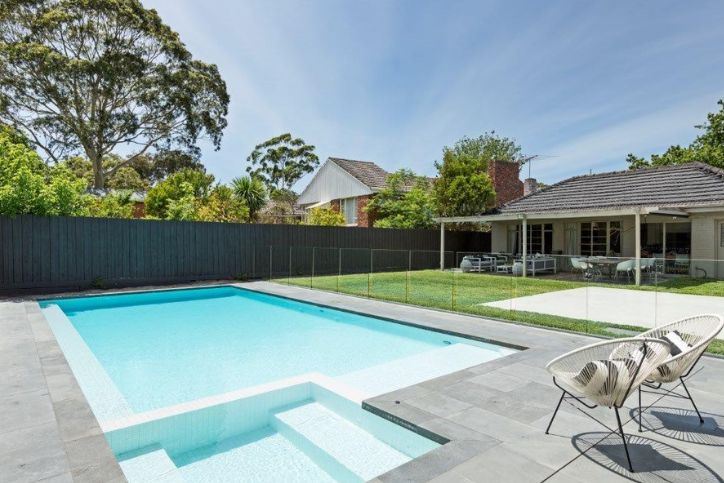When it comes to installing a swimming pool in your backyard, one of the biggest decisions you’ll face is choosing the type of pool that best fits your lifestyle, budget, and aesthetic preferences. Two of the most popular options are concrete vs fibreglass pool. Each has its own unique advantages and potential drawbacks. In this comprehensive guide, we’ll compare concrete and fibreglass pools in terms of cost, durability, maintenance, design flexibility, and installation time, helping you make an informed decision.
What Are Concrete and Fibreglass Pools?
Before diving into the comparison, it’s important to understand the key differences between the two.
- Concrete Pools: These are custom-built pools made by pouring or spraying concrete into a reinforced steel framework. They are often finished with tiles, plaster, or pebblecrete, providing a luxurious and personalized look.
- Fibreglass Pools: These are pre-manufactured, one-piece pool shells made from fibreglass reinforced with resin. They are delivered to your site and installed into a pre-dug hole, offering a quicker installation process.
Cost Comparison: Which Pool Fits Your Budget?
Initial Installation Costs
- Concrete Pools: Concrete pools generally cost more upfront due to their customization and labor-intensive construction process. Prices can range from $50,000 to $100,000 or more, depending on the size and complexity of the design.
- Fibreglass Pools: Fibreglass pools are more affordable initially, with costs typically ranging from $35,000 to $65,000. Their pre-made nature reduces labor and material costs.
Long-Term Costs
- Concrete Pools: While durable, concrete pools require resurfacing every 10-15 years, which can be a significant expense. Maintenance costs are also higher due to their susceptibility to algae growth.
- Fibreglass Pools: Fibreglass pools have lower long-term costs due to their smooth, non-porous surface, which resists algae and reduces chemical usage. They generally require fewer repairs over time.
Durability and Lifespan
Concrete Pools
Concrete pools are incredibly durable and can last for decades with proper maintenance. Their solid construction makes them ideal for withstanding extreme weather conditions or heavy usage. However, their porous surface makes them prone to algae growth and staining, requiring regular cleaning and maintenance.
Fibreglass Pools
Fibreglass pools are also durable, but their longevity depends on the quality of the fibreglass material and proper installation. They are less prone to cracks than concrete pools and maintain their structural integrity over time. However, they may fade or develop cosmetic imperfections after years of exposure to the sun.
Maintenance: Which Pool Is Easier to Care For?
Concrete Pools
- Require regular brushing to prevent algae buildup.
- Need more chemicals to balance water pH and prevent staining.
- May require resurfacing every 10-15 years, which is costly and time-consuming.
Fibreglass Pools
- Easier to maintain due to their smooth, non-porous surface.
- Use fewer chemicals, saving on maintenance costs.
- Rarely require resurfacing, making them a low-maintenance option in the long run.
Design Flexibility
Concrete Pools
- Advantage: Concrete pools offer unmatched design flexibility. They can be built in any shape, size, or depth, and can include features like infinity edges, tanning ledges, or integrated spas.
- Disadvantage: The extensive customization increases both cost and construction time.
Fibreglass Pools
- Advantage: Modern fibreglass pools come in a variety of shapes, sizes, and finishes, making them an attractive option for many homeowners.
- Disadvantage: They are limited to pre-designed molds, which may not suit those seeking a completely unique pool design.
Installation Time
Concrete Pools
Building a concrete pool is a lengthy process, often taking 3-6 months from start to finish. The timeline includes excavation, framework construction, concrete curing, and finishing work.
Fibreglass Pools
Fibreglass pools have a significantly faster installation time, often completed within 2-4 weeks. Their pre-manufactured design reduces on-site labor and makes them ideal for homeowners looking to enjoy their pool sooner.
Environmental Impact
Concrete Pools
Concrete pools have a higher environmental impact due to the energy-intensive production of cement and the use of significant amounts of water during construction.
Fibreglass Pools
Fibreglass pools are considered more eco-friendly as their production process uses less energy. Additionally, their lower chemical usage during maintenance reduces their environmental footprint over time.
Resale Value
Both concrete and fibreglass pools can enhance the resale value of your property, but their impact may vary depending on your local market and buyer preferences.
- Concrete Pools: May appeal to buyers looking for luxury and customization.
- Fibreglass Pools: Attract buyers seeking low-maintenance and cost-effective solutions.
Conclusion: Concrete vs. Fibreglass—Which Should You Choose?
The choice between a concrete and fibreglass pool depends on your personal priorities:
- Choose concrete if you value customization, long-term durability, and are willing to invest time and money into maintenance.
- Choose fibreglass if you prefer affordability, quick installation, and low maintenance.
Both options offer unique benefits and can transform your backyard into a personal oasis. By considering your budget, lifestyle, and long-term goals, you can confidently select the pool that’s right for you.






Comments